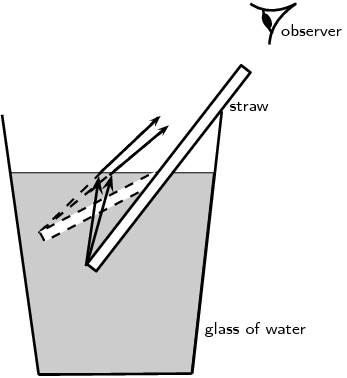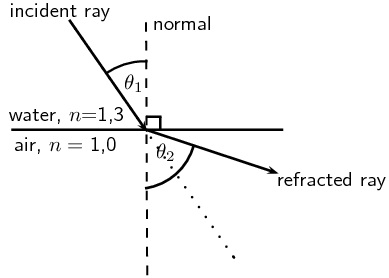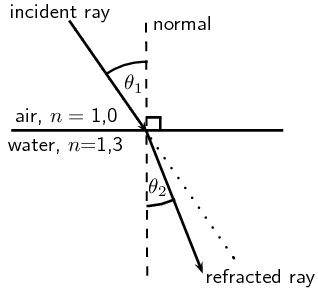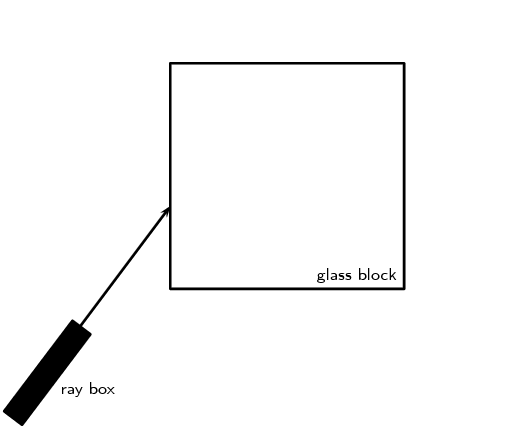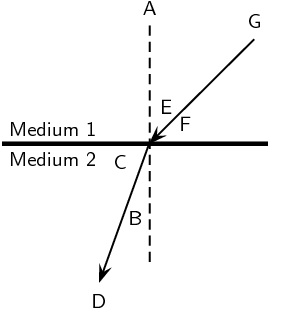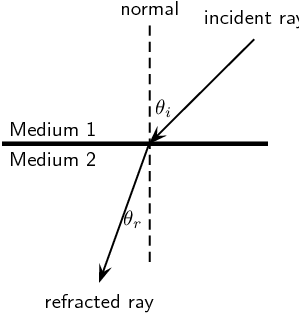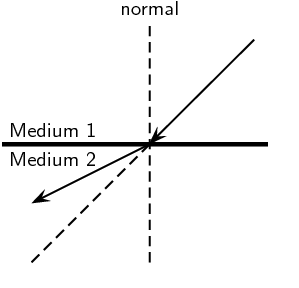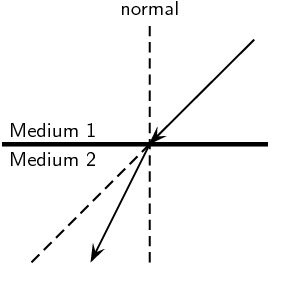Use the values given in Table 5.1, and the
definition of refractive index to calculate the speed of
light in water (ice).
We look in Table
5.1 and find that the refractive index of
water (ice) is \(\text{1,31}\). So the speed of light in
ice is:
\begin{align*}
v &= \frac{c}{n} \\
&= \frac{\text{3} \times \text{10}^{\text{8}}\text{
m·s$^{-1}$}}{\text{1,31}} \\
&= \text{2,29} \times \text{10}^{\text{8}}\text{
m·s$^{-1}$}
\end{align*}
Calculate the refractive index of an unknown substance where
the speed of light through the substance is
\(\text{1,974} \times \text{10}^{\text{8}}\)
\(\text{m·s$^{-1}$}\). Round off your answer to 2
decimal places. Using Table 5.1, identify
what the unknown substance is.
We are told that the speed of light in the unknown substance
is: \(\text{1,974} \times \text{10}^{\text{8}}\)
\(\text{m·s$^{-1}$}\). We use this to find the
refractive index of the substance:
\begin{align*}
v &= \frac{c}{n} \\
n &= \frac{c}{v} \\
&= \frac{\text{3} \times \text{10}^{\text{8}}\text{
m·s$^{-1}$}}{\text{1,974} \times \text{10}^{\text{8}}\text{
m·s$^{-1}$}} \\
&= \text{1,52}
\end{align*}
We look on Table
5.1 for the substance that has this
refractive index and find that the substance is crown
glass.

